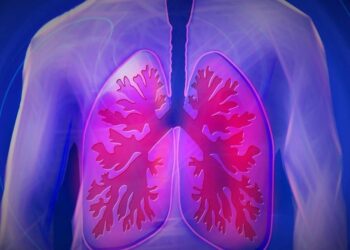There are tubes like airways which help carry air from the environment into your lungs, and then right out. These tubes are called the bronchial tubes. When everything is normal, these tubes are clear, open and allow a smooth passage of air.
But sometimes irritants or infections like viruses or bacteria get into these tubes and irritate the bronchial tubes. What this means is that these tubes become red, swollen and very sensitive. This information causes a tube to produce extra mucus which is a thick sticky substance your body makes to try and trap and also remove the irritants.
This extra mucus clogs up your bronchial tubes, making it harder for air to move through them like they would normally do. This is why people who suffer from bronchitis often have a cough, shortness of breath or wheezing because the narrows make it tough to breathe normally. In this article we are going to look at how to treat bronchitis.

Diagnosis of Bronchitis
When you first go to the hospital the doctor will ask you about the symptoms that you have been experiencing like how long you have had a call or if you are coughing up mucus. During the examination your doctor will listen closely to your lungs with a stethoscope to see if there’s any wheezing or other strange sounds. The doctors may also check your temperature to see if you have any fever, as fever is one of the symptoms of bronchitis.
In some cases, doctors may request a chest x-ray scan or CT scan to give them a better look at what is happening inside your lungs. If your doctor thinks bacteria might be because of the problem, they might ask you to cough up some mucus called sputum. This sputum is tested and it will be used to decide your treatment options.
How is Bronchitis Treated?
The available treatment methods for bronchitis are pretty straightforward. The best thing you can do is to rest and drink lots of fluids which will help your body fight off the infection and keep you from being dehydrated.
Over-the-counter Medications
The next thing that you can do to treat your bronchitis is to get a recommended over the counter medication which is usually pain relievers like ibuprofen or acetaminophen to help you with your fever and your aches. However, if your cough is really bothering you you can decide to get a cough suppressant to help you sleep better at night.
Antibiotics
In some cases, bacteria can also cause bronchitis and what is being used to treat bacteria illnesses are usually antibiotics. Most people would usually opt for antibiotics when they notice symptoms of bronchitis such as a sore throat. However, antibiotics are not a primary treatment option for all types of bronchitis.
So to know whether you are liable to get an antibiotic prescription for your bronchitis, you have to check with your doctor who would then diagnose you with the kind of bronchitis that you have. If your bronchitis is bacterial, then the doctor will prescribe you antibiotics.
Bronchodilator
Just like asthmatic patients, or crisis patients also have an inhaler that they use whenever they have trouble breathing or when they wheeze. This inhaler is called a bronchodilator which helps open up airways and help you breathe better.
Humidifiers or Vaporizers
When a person has bronchitis, the lining of the lungs is usually inflamed and breathing in dry air can be really raspy and painful at times. Using a humidifier or a vaporizer in your room can add moisture to the air which will help you breathe easily and will not irritate your airways.
Bottom Line
Bronchitis happens when your bronchial tubes, which are the airways that bring air in and out of your lungs, get irritated or infected. This makes them swollen and filled with mucus, making it harder to breathe. To treat bronchitis, you should rest, drink plenty of fluids, and take some medications like pain relievers, cough suppressants, or antibiotics if it’s caused by bacteria. Sometimes, using an inhaler or a humidifier can help you breathe easier.

















